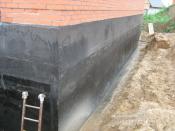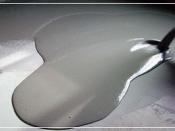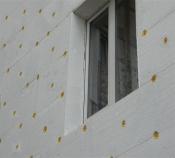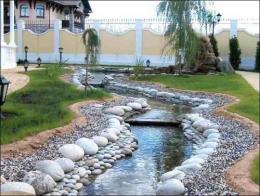Search
Login
Recommended
Pebble garden paths at your cottage, how to make a pebble garden path correctly, care of a pebble garden path
The construction market continues to surprise consumers with a variety of finishing materials, which began to lead to a gradual abandonment of the usual paving slabs as the main material when paving garden paths. The fashion trend that determines the choice of material for the implementation of such a widespread design project is the frequent preference for pebbles for finishing garden paths.
Content
- The relevance of pebble garden paths. Pebbles as an original building material
- Historical reference
- How to make pebble tracks? Preparatory work
- We make pebble garden paths in stages video
- Pebble Garden Path Care
The relevance of pebble garden paths. Pebbles as an original building material
Pebble garden paths are gaining popularity, which led to the widespread use of this building and decorative material and the direct reception of paving as a fashionable design trend.

Pebble is an original building material for decorating a garden plot. The product of many years of tireless work of inexhaustible river flows and violent sea waves has found wide application today in the architectural and landscape direction.
Historical reference
The described method of paving garden paths with pebbles was first used in the garden culture of Ancient China, where, according to the laws of Feng Shui, pebbles and other round stones were to become an integral element of any garden, as they are a symbol of the fusion of male and female energy yin-yang .

The use of pebbles in paving garden paths was also welcomed by Chinese folk medicine, in accordance with the principles of which walking bare foot along pebble paths has a restorative effect on the body.
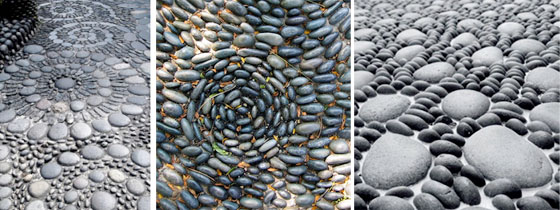

From the time of ancient culture, pebble was used to create patterns and ornaments, which later became a work of art. Since then, virtually no changes have occurred, and today pebbles are used both as primary and secondary material for paving paths, and are also used for combined paving in combination with artificial and natural materials.

How to make pebble tracks? Preparatory work
How to make pebble tracks? - This question has become very common among those who want to give originality to their garden plot, and those who feel in themselves the inexhaustible potential of the artist or just creative nature.
The widespread use of pebbles in modern construction and landscape design is due to its high practicality and high level of strength indicators, as well as durability and a variety of color solutions. Pebble paths, photos of which are presented below, will ideally fit into the landscape composition of the park, cottage or garden.
In order to answer the question: How to make a pebble track with your own hands ?, you need to consider a design solution for your original track, determine its original shape, and if you decide to create a decorative mosaic pattern of pebbles, you need to carefully consider more a good option for him. And only having decided on all of the above nuances, we can proceed to the direct construction of the path in the country from pebbles.
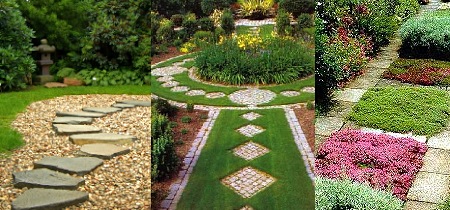
Having decided to lay out a mosaic pattern from pebbles, you need to be patient and attentive, and also prepare for the fact that this is a rather laborious process that requires time.
We make pebble garden paths in stages
So, in order to answer the question: How to make a garden path ?, we will define a clear sequence of actions, observing which, you will become the owner of a cozy corner for the soul and moral satisfaction.
The first step in creating a track is to dig a trench, while its depth should be at least 30-40 centimeters. In this case, it is necessary to fill the bottom of the pit with a 10-cm layer of sand, onto which fine-grained gravel is poured.

We must not forget about the curb stones that need to be leveled with the help of a building level. The gap formed between the walls of the trench and the curb restrictions must be filled with concrete.
During the time required for the initial setting of the concrete mortar, you can and even need to start creating schematic drawings of paths and flowers, which will become the main decorative compositions of your future garden paths. This manipulation can be done on paper and electronic media.
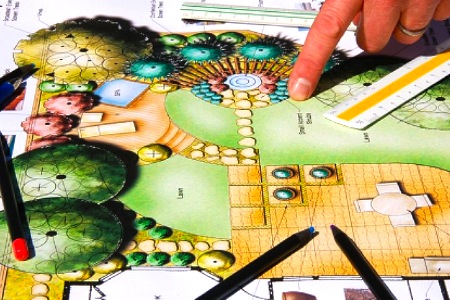
Experts recommend digging a recess, the level of which reaches 15 centimeters, in the place of potential mosaic laying. The finished mosaic pattern should be located above the soil level to create conditions that prevent the accumulation of moisture on the track.
Ideally, the bottom of this recess should be a multilayer system, including a layer of stone chips, two layers of geotextile materials that protect the path from germination of weeds, and a 5-cm layer of sand. On top of the resulting multilayer composition, it is necessary to fill in a dry mixture, the total thickness of which should not exceed five centimeters. The composition of the mixture is represented by sand and cement, and when working with concrete mix it is necessary to observe the exact proportions, in accordance with which it is necessary to use three buckets of sand and a bucket of cement. This mixture needs subsequent wetting with water to give it a loose consistency.

Next, you need to approach the direct process of paving. To do this, on the moistened concrete mixture, the primary contour outlines of the future pattern are applied, followed by the laying of the mosaic. It is recommended to start laying out from the central part of the pattern, while the stones must be laid in a strictly vertical position, without leaving free spaces. We must not forget that one or two-thirds of a stone is deemed to be a necessary condition for high-quality paving.

An obligatory moment of mosaic paving is the alignment of small pebbles, which will require a rubber construction hammer, and the voids formed after leveling are filled with concrete mixture. That's all, the track is almost ready.
Finally, it is wetted with a small amount of water and covered with polyethylene or tarpaulin material until it dries completely. After two or three days, it is necessary to remove the covering material and wipe the finished mosaic pattern with a rag to remove the remaining cement and dust.

Pebble Garden Path Care
As for the care of garden paths paved with pebbles, it consists mainly in the fight against excess moisture and weeds. But with the proper arrangement of this element of decor, care for it is simplified to a minimum.
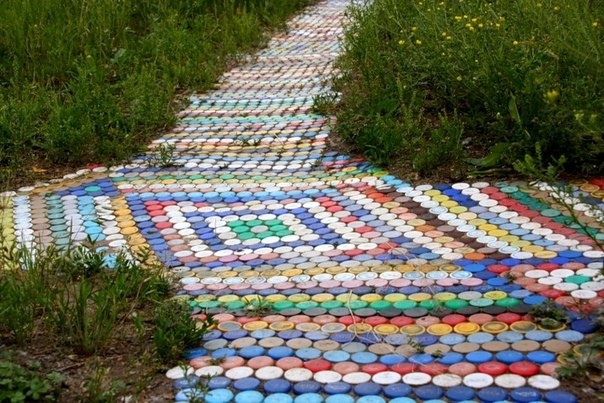
This is due to the fact that the arrangement of the track on an elevation and the use of the multilayer structure described above protects the track from accumulation of excess moisture, and the use of geotextiles in this structure, which, as mentioned above, spreads in two layers, protects the decorative element of the landscape from spreading weeds.
